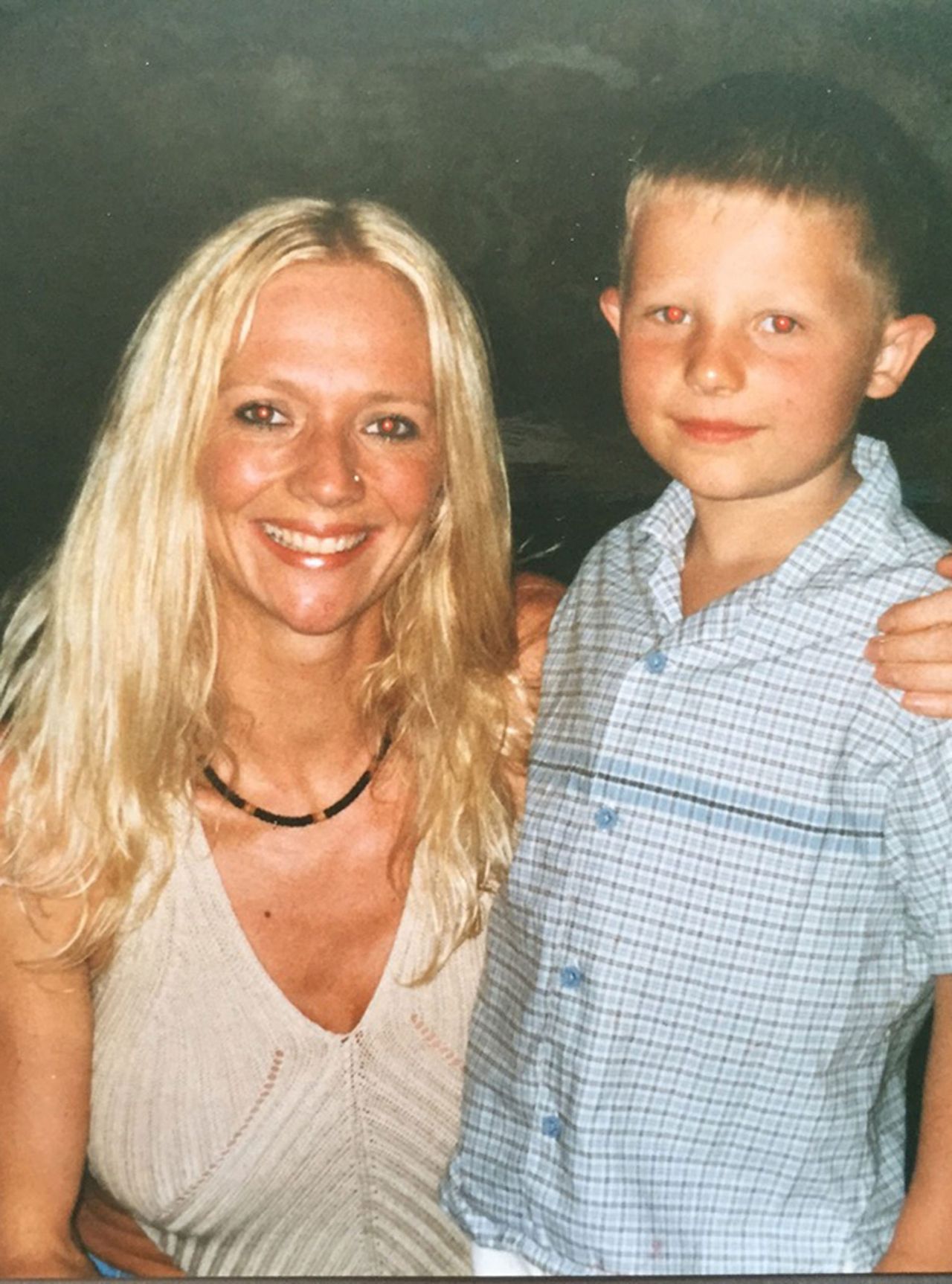The Silent Killer In Your Home

Carbon monoxide poisoning left Sue Westwood, 43, with permanent neurological damage. Read her story, and learn how to spot the warning signs...
We'd just moved home when the symptoms started. My husband, Paul, and I had bought a four-bedroom new-build house in Sale, Cheshire, and it was lovely to be able to decorate and furnish it from scratch. In particular it was great having so much room - especially for our son Josh, who was then five years old.
Not long after we moved in, however, I started to feel under the weather. I'd get headaches and feel fluey and nauseous. I assumed I was run-down. I'd just started my own business, based at home, assessing damage on buildings for insurance. I was working long hours six days a week, and had a very energetic little boy and a busy social life.
What was confusing was that my symptoms had no real pattern that I could fathom. During the day, if I was out, I felt fine. It was when I got home, I started to feel awful again, sick and lethargic, but not every single night. Sometimes it was worse in the mornings, other times it was midday.
I assumed I was running on adrenaline, and felt terrible when I relaxed - classic stress, or so I thought. I went to my GP who said my immune system was probably low. She did some blood tests, which didn't show anything specific. It was February, so she suggested taking vitamin tablets and turning up the central heating to ensure I kept warm.
But the more I put the heating on, the worse I felt, though I didn't put the two together at the time. It affected Josh as well. He complained of tummy aches and feeling sick. Again the doctor said she couldn't find anything wrong. It was baffling. Paul said he felt a bit off from time to time, but nothing like Josh and me.
In fact, he went completely against the GP's advice and insisted on opening the windows at night, saying fresh air was much healthier than a stuffy centrally heated room. I would get really cross, but this probably saved our lives.
Sign up for the woman&home newsletter
Sign up to our free daily email for the latest royal and entertainment news, interesting opinion, expert advice on styling and beauty trends, and no-nonsense guides to the health and wellness questions you want answered.
As time went on, my symptoms started to get worse. I felt headachy and panicky. I'd get numbness and tingling in my arms and my chest felt tight, and I couldn't get my breath. I was back and forwards to the GP and popping paracetamol like sweets. Because I felt unwell I started to stay at home more, and worked from my office upstairs. But I just felt worse. I remember one night, after it had been going on for two years, sitting on the floor completely bewildered, wondering how on earth I was going carry on.
Then, during a particularly chilly spell, I was in my office doing some work one morning and felt violently ill. I projectile vomited and instinctively staggered downstairs to the front door. My head was throbbing and I couldn't breathe. I collapsed and crawled out on to the path and just about managed to dial 999. I knew I was going to die if I didn't get help. I was rushed to hospital and kept in for six days. But it quickly became clear that the doctors had no idea what was wrong. I had blood tests, ECGs, chest X-rays, an echocardiogram and, at one point, I ran on a treadmill while doctors monitored my pulse and heart rate.
The medical staff were at a loss to explain it. They just couldn't understand why a fit and healthy woman, with no history of heart disease, was so ill. I was discharged and went home, feeling slightly better, but I was back within two days, having collapsed again. It was terrifying. I limped on through the summer. Of course, the boiler was used less because we didn't have the heating on. But I noticed I was becoming more forgetful. I'd miss appointments, even though I'd written them down. I'd struggle remembering facts and figures, and start the same conversation several times. I was convinced it was dementia. Then, three years after moving in, our boiler warranty expired. I called British Gas to come and service it.
The heating engineer had been there for only a few minutes when he ordered me out of the house. He'd discovered dangerously high levels of carbon monoxide. He immediately disconnected the boiler, opened the windows and took up the floor to trace the path of the boiler pipes. He discovered the flue was leaking fatal levels of carbon monoxide because 12 inches of pipe was missing. It was then that the penny dropped. When I googled CO poisoning I found that my symptoms were typical.
We'd never got a carbon monoxide alarm, something I've regretted many, many times. But we'd assumed there would be no problems with a new boiler. An assumption that could have cost us our lives.
Ten years on, Paul and Josh have few ill effects because they weren't in the house as much, although Josh has poor memory and concentration. I, on the other hand, have serious neurological damage, terrible migraines and memory loss so severe I had to give up my business.
A doctor at a memory clinic said that if he hadn't met me, he'd have guessed I was 80 because my symptoms were like those of someone with severe vascular dementia. I called in lawyers and over the following six years a case was made against the builders. But it wasn't until 2013 that they finally admitted liability for negligence in fitting the flue incorrectly. We were awarded a five-figure payment, but no one has been held responsible for my illnesses. I was told it was too difficult to prove. I was never tested for CO poisoning because it didn't occur to the doctors that was the cause. I think they're more aware now, but even so, the gas leaves your body so quickly, you have to be tested within minutes of inhaling it.
Paul and I have since divorced. While my symptoms weren't the cause, they did put a strain on our relationship. However, I have started a new photography business, which is doing really well. I would say to anyone with the symptoms I have described, get your boiler and CO levels checked. Having an alarm is vital, but I've since learned they don't pick up low levels of CO. Getting your levels checked out by a professional is not that expensive and could spare you years of ill health and even save your life.
Watch this short video for tips on how to protect your home from Carbon monoxide... http://www.youtube.com/watch?v=z9RiuL6UWEM
Do you know all the facts?
Carbon monoxide (CO) is a deadly gas that can be emitted from faulty cooking/heating appliances powered by any carbon-based fuel (gas, coal, wood, petrol, diesel, etc). When flues, chimneys or vents become blocked, or boilers are not fitted properly, oxygen levels drop and CO is produced, which then builds up inside enclosed spaces.
Carbon monoxide is given off by charcoal BBQs, and poisoning can occur if these are used in an enclosed space (eg, a tent or small cabin).
CO has no odour, taste or smell so you can't tell when you're breathing it in.
Less than 2% of CO in the air can kill in between one and three minutes.
There have been at least 699 deaths from CO poisoning in the UK in the past 20 years and over 5,000 near misses.
The Carbon Monoxide and Gas Safety Society is campaigning for the Government to provide prime-time TV warnings about CO poisoning to save lives. "We suspect around 4.5 million people are being affected by CO poisoning," says the charity's director Stephanie Trotter.
Protect yourself
Get your gas appliances and flues regularly serviced by a Gas Safe Registered engineer.
Call one out if the flame on your cooker, fire or boiler is lazy yellow or orange (it should be crisp and blue), if you see soot or dark staining around or on appliances, if pilot lights frequently blow out, or if there's increased condensation inside windows.
Fit an audible carbon monoxide alarm in each room with a gas appliance. Available from around £15 from DIY stores or your energy supplier.
Don't just rely on "black spot" detectors that change colour when CO is present - they won't make a sound to wake you up - by then it may be too late.
Common symptoms to look out for:
Headaches
Nausea/vomiting
Exhaustion
Drowsiness
Dizziness
Flu-like symptoms
Palpitations
Chest pain
Collapse without necessarily losing consciousness
If you experience any of these symptoms: Get fresh air immediately. Open doors and windows, turn off gas appliances and leave the house. See your GP immediately or go to hospital - tell them you suspect carbon monoxide poisoning. It's important to be tested as soon as possible because CO leaves the system very quickly.
-
 Oprah Winfrey reveals the unexpected menopause symptom that made her feel like she was 'going to die'
Oprah Winfrey reveals the unexpected menopause symptom that made her feel like she was 'going to die'Winfrey opened up about her experience ahead of releasing 'An Oprah Winfrey Special: The Menopause Revolution' on Disney+ in the UK
By Kat Storr Published
-
 Amanda Holden nails tonal dressing with a difference in dusty blue and mint green
Amanda Holden nails tonal dressing with a difference in dusty blue and mint greenAmanda Holden just paired dusty blue and mint green together and highlighted that tonal dressing can incorporate different colour families.
By Emma Shacklock Published